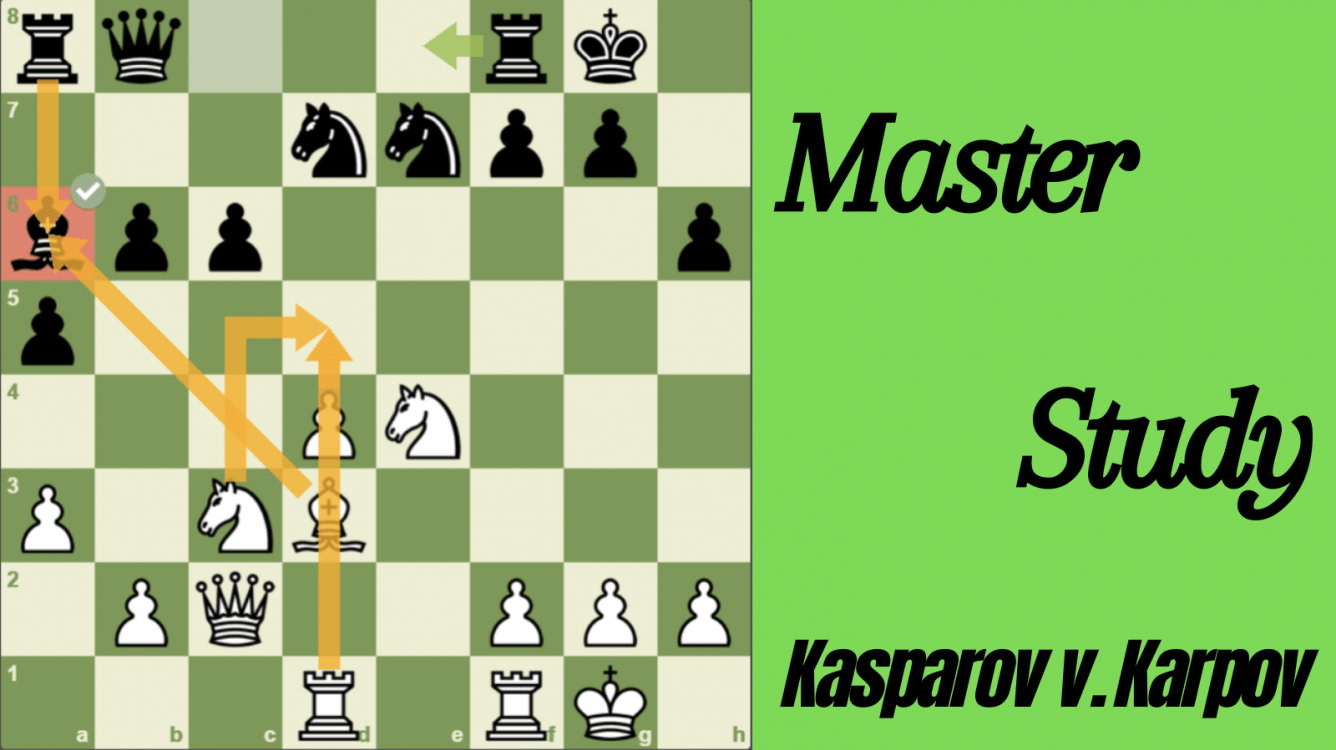
Master Study: Kasparov vs. Karpov
Master Study
Kasparov vs. Karpov
It was September 22, 2009. Gary Kasparov and Anatoly Karpov were sitting across from each other in Valencia to play some rapid and blitz games against each other. These two former world champions and some of the strongest players in chess history would play some incredible games at Valencia. I will be focusing on the second game of their rapid section, where Kasparov was playing with white, while Karpov had the black pieces.
The Game
Kasparov begins the game with d4, and Karpov responds with the simple d5. The game continues with the basic Queen's Gambit Declined. Kasparov brings out his knight, and Karpov plays the simple Be7. They exchange in the center, and Kasparov brings out his bishop to f4, while Karpov plays c6. Nothing crazy has happened, although it can be noted that Kasparov's position resembles the London System without a c pawn.
The game continues with Kasparov developing his queen, taking control of a diagonal, as well as preparing a potential long castle. Karpov offers a bishop trade with Bd6, which is a common move in the London to get rid of the powerful bishop. White will sometimes drop back the bishop to open the rook's file if there is a trade, but Kasparov takes first.
Karpov develops his knight out, making it possible to castle. Kasparov responds by lining up his bishop with his queen, targeting the h pawn. Now, he shouldn't take quite yet because that would open black's rook, as black doesn't have to castle. However, once black castles short, it can be attacking through the h file, especially if white long castles. The game continues with both players bringing out their knights. Kasparov can now castle both ways.
Karpov plays h6, stepping out of the way of the bishop-queen attack. Both players decide to castle short. Then, Kasparov decides to play a3. Karpov plays a5, preventing any b4 ideas from happening.
Kasparov centralizes his rook, and he does this to support a pawn break that will soon take place in the center. Meanwhile, Karpov plays b6, to develop his light square bishop. But this is just a little slow and leads to the important pawn break of e4. And after they exchange, Kasparov suddenly has a pretty good position, with multiple pieces preparing to attack the king, while Karpov's queen is getting kicked back and hasn't fully developed.
And this is where the first inaccuracy takes place. It is just a square difference of Qb8 and Qc7. Qc7 is better because it is slightly more active while still performing the same defense. But N2c3 is a mistake for the most subtle reason, in that it really doesn't have a purpose on that square. It is passive as its only movement is back and the push for d5 is not possible as it would lead to black having a center pawn once they take with the knight. For example:
However, Karpov would play Ba6, offering a bishop trade.
The difference with this move is that Kasparov's rook is now supporting the push and there is adequate support to go for d5. The result is white's slight advantage with more active pieces.
There aren't any comfortable squares for black, so Karpov defends with his rook. However, Kasparov adds pressure to the rook, and it is obvious that Kasparov will be able to keep adding pressure. Karpov has to move his knight. However, he moves it to c5. On the surface, this looks like a reasonable move. But it loses the game. Can you find why?
Did you find the move?
Nf6+ is a brilliant move because it forces black to open the position with gxf6, making it extremely vulnerable. Can you find the reason that Kh8 doesn't work?
Kh8 would lead to an unstoppable mate, so Karpov is forced to take the knight.

Kasparov continues by massive infiltration of the king's safety by bringing in his queen. Karpov tries to push forward his pawn to set a defensive trick of f6, which allows his rook to guard the king, but Kasparov continues by finding the only move of Qg5+, keeping the pressure on the king.
Kasparov gives another check and makes sure that Karpov can't advance the pawn, then he takes. Karpov tries to kick out the queen with Ne4, but Kasparov finds the only good move again with Qh4, hitting the knight and maintaining pressure on the open king.
And the game continues for a little longer with Karpov trying to make a way for his king and pushing his rook forward, but Kasparov lines his rook and queen, and the game is over with Kasparov claiming the game on move 28.
But what are your thoughts on this epic game that took place? Who do you think is the strongest chess player of all time? Let me know!
Also, a very happy Mother's Day to all!
